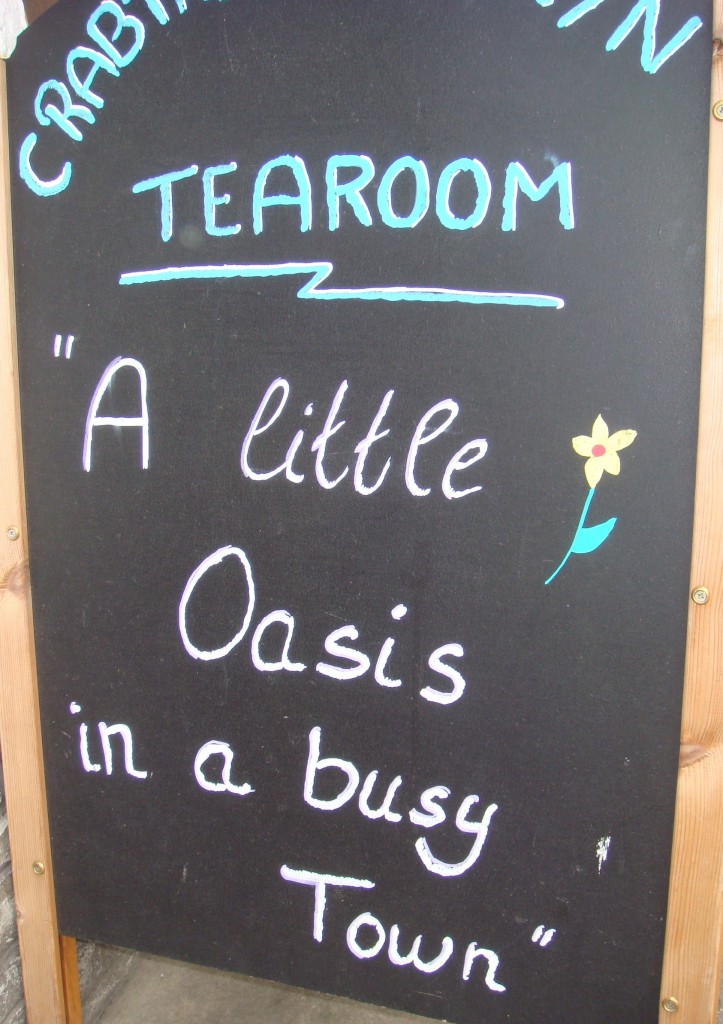A sculpture of three women stands outside a home in a small village on the edge of western England’s Haworth moor. Diane Lawrenson’s life-size bronze sculpture group portrays the Brontë sisters, Anne, Charlotte, and Emily, occupants of that surprisingly creative family parsonage.

According to the Brontë Society1 web site (bronte.org.uk), Haworth back in the 1800s was a “crowded industrial town, polluted, smelly and wretchedly unhygienic.” Haworth has since cleaned itself up and now [2011] features charming stone buildings and cobbled streets, tea shops and bakeries, tourist trinket shops, and parking areas for the bus tours. Once outside of town, however, the surrounding countryside can be a muddy mess, especially in mid-November when I visited.
And all that walking! My traveling companions and I hiked many miles throughout the Haworth area, following paths across the moors to the sisters’ story inspirations. One was a ruined farm named Top Withens that supposedly was Emily’s model for her only novel, Wuthering Heights. Perhaps someday I’ll also hike around Ponden Hall, which the Brontë Society says more resembles the Earnshaw home in the novel.
I first read Wuthering Heights in Mrs. Wadham’s high school English class in 1965. Brontë’s novel forced me to raise my head above the emotional trenches of teenaged complacency, and, as I peeked out onto the soggy Yorkshire moors, steeped me in the ancient themes of poverty, sexual tension, obsession, despair, and ghosts reuniting on a desolate crag. The drama grabbed me by the throat and shook me. Ponden Kirk, a crag of siliceous sandstone and the apparent inspiration for Penistone Crag in Emily Brontë’s Wuthering Heights.
There was also plenty of actual drama in the Brontë family. Emily, Charlotte, and Ann Brontë, their brother Branwell, and their parents lived frugal, malnourished lives in the parsonage in Haworth. The mother Maria died of uterine cancer at age 38, and her first two daughters died, Elizabeth at age 10 and Maria at age 11, from tuberculosis. Then, after a series of setbacks, Branwell sank into depression and died at age 31. Tuberculosis, laudanum, opium, alcoholism, and hanging out at Haworth’s Black Bull pub all played their parts.
All of the Brontë children died young. Emily died at age 30 from tuberculosis (but also, some say, from anorexia2), and Anne died a year later at age 29. Of all the six Bronte siblings (five sisters, one brother), Charlotte lived the longest, succumbing at age 38 after her nine-month marriage to parish priest Arthur Nicholls3 and complications of her pregnancy. Their father outlived all of his children by six years, dying in 1861 at age 84. Yet the sisters’ novels survived. Jane Eyre (1847), Wuthering Heights (1847), The Tenant of Wildfell Hall (1848), and Agnes Grey (1847) continue to inspire and bother. Movies, musicals, ballets, societies, festivals, and spoofs4 also keep the Brontë name alive.
The original Irish family surname was O Pronntach, Prunty, Brunty, or Bronty. The spelling was changed and the diaeresis (umlaut) added over the terminal E after Patrick’s family left Ireland. A Bronty family story of an adopted foundling in Ireland and star-crossed lovers seemed an almost exact plotline for Wuthering Heights. Anne and Charlotte also used Brontë family lore in their stories, originally published under men’s names (though with identical initials) Currer (Charlotte), Acton (Anne), and Ellis (Emily) Bell.
What role does companionship play? How important might the presence of other people be to a writer? Would the parsonage vibe have been like you were living in isolation with your writing group? How important was it that none of the Brontë girls married? (Though Charlotte was married for nine months after her sisters had all died.) Would controlling husbands have forbidden their wives’ writing careers?
Learning the Brontës’ story made me think a lot about isolation and great longing, lousy weather and productivity, encouragement, creativity, and lots of time. But then, there are other women in other cultures and times who shared and faced many, if not more, of the same conditions and issues.
Does it make a difference if you are in England or Saudi Arabia or Uzbekistan? Or in a small village with long winters or a large Midwestern city with sticky, horrid summers? Feeling trapped but compelled to record it all can be common, but perhaps having others living with you who are similarly talented and trapped is part of the formula.
Or were the Brontë sisters simply all introverts who quietly enjoyed the imaginations of their siblings, spurring them on? Would it have mattered if their mother and two older sisters had not died? The three surviving sisters seemed plagued by malnutrition, self-care challenges, misogyny, and a longing for normal relationships and useful work. Their aunt had left them an inheritance that in large part supported their writing careers. Yet what could have been if they had actually been able to make a living as writers? And were able to eat properly? And maybe bought some proper cloaks, woolen hats, and waterproof boots for all that wind and mud?
Movies about the Brontës:
The Brontë Sisters. 1979.
To Walk Invisible. The Brontë Sisters. 2016. British film made for TV.
1 The Brontë Society seems to have split into two factions: the modernizers and the
conservatives. Each faction vies for the soul of the Brontë legacy.
2 Sarah Pearce offers a feminist reading of Brontë novels, examining anorexia, food
refusal, female fasting, and gaining control through not eating. Pregnancy can be
affected by anorexia and lead to dangerous complications.
3 Nine years after Charlotte’s death, Nicholls returned to Ireland and was married to his
cousin Mary Bell for 42 years. He maintained control over Brontë family
manuscripts and memorabilia until his death from bronchitis in 1906.
For a delightful and irreverent YouTube treat, watch The History Girls do some Brontë
sister interactions at The Brontë Sisters. COFILMIC

Post a Comment